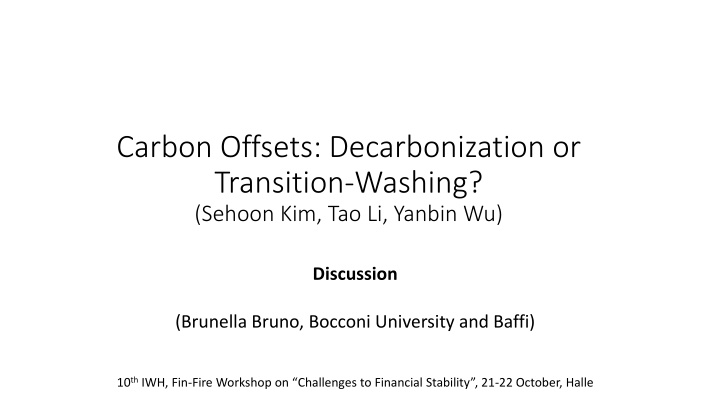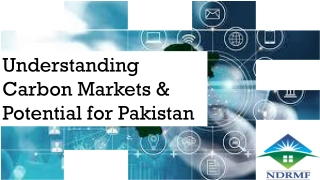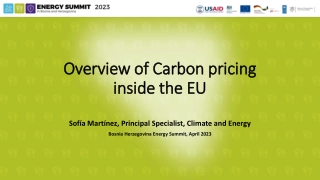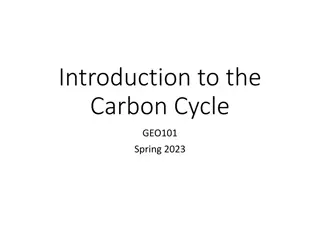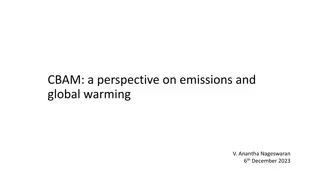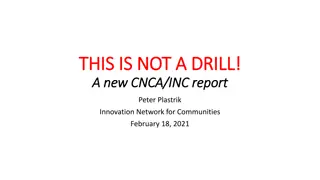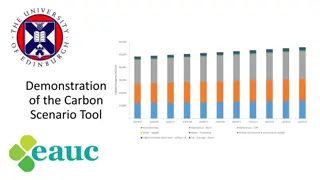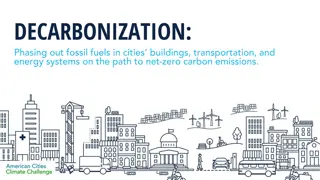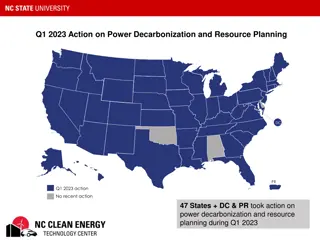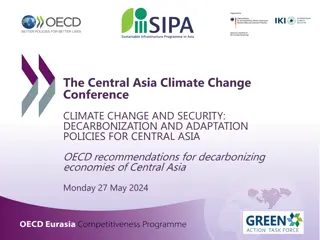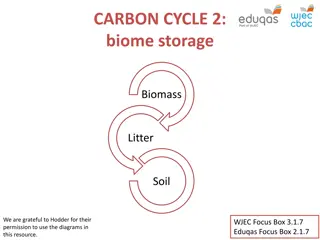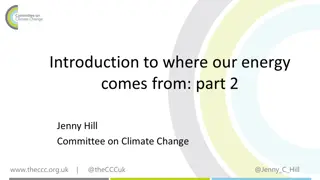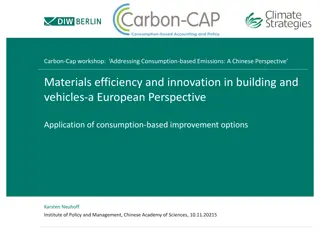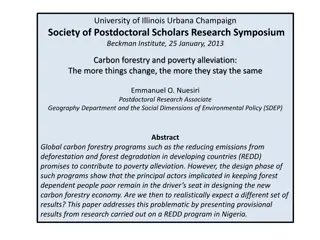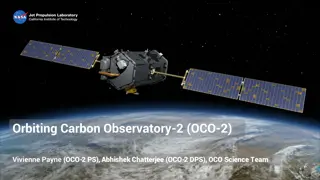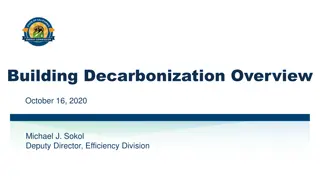Carbon Offsets: Decarbonization Strategies Revealed
The discussion explores the use of carbon offsets by globally listed companies as part of their net-zero transition strategy. It delves into the motivations behind firms' utilization of CO2 offset credits and presents hypotheses like the outsourcing and certification models, backed by empirical analyses from a rich dataset.
Download Presentation

Please find below an Image/Link to download the presentation.
The content on the website is provided AS IS for your information and personal use only. It may not be sold, licensed, or shared on other websites without obtaining consent from the author.If you encounter any issues during the download, it is possible that the publisher has removed the file from their server.
You are allowed to download the files provided on this website for personal or commercial use, subject to the condition that they are used lawfully. All files are the property of their respective owners.
The content on the website is provided AS IS for your information and personal use only. It may not be sold, licensed, or shared on other websites without obtaining consent from the author.
E N D
Presentation Transcript
Carbon Offsets: Decarbonization or Transition-Washing? (Sehoon Kim, Tao Li, Yanbin Wu) Discussion (Brunella Bruno, Bocconi University and Baffi) 10th IWH, Fin-Fire Workshop on Challenges to Financial Stability , 21-22 October, Halle
Motivation and research question Background: The transition to a carbon-neutral economy is a global policy objective. Increasing scrutiny by external observers (policy makers, consumers, investors, ) A growing number of firms globally committed to reduce their CO2 emissions, but uncertainty of the effectiveness of such commitments (Aldi et al., 2023). Two main strategies towards net-zero transition: direct, in-house reduction of C02 emissions and indirect C02 emissions through carbon offsetting . What the paper does: Provides a comprehensive overview of how firms use carbon offsets globally Addresses the empirical question: Why do firms use C02 offset credits?
The paper in a nutshell Super rich and novel data set from multiple sources Data on C02 offsets projects + publicly listed companies world wide (retirement beneficiaries) + Rating and pricing data on projects + ESG rating on firms Analysis on nearly 900 publicly listed companies from 46 countries Comprehensive overview of how firms use carbon offsets globally Descriptive statistics to show the characteristics of Carbon Offset Projects and linear probability models to show which projects are more likely to be used by publicly listed firms Research Question: Why do firms use C02 offset credits? Two (non-mutually exclusive hypotheses): outsourcing hypothesis and certification hypothesis Several analyses to test the hypotheses based on a quasi-natural experiment
My Comments Very clear and interesting paper on a policy relevant matter, with a rich, granular dataset. Very informative, thank you! My focus: A few suggestions on how to reinforce the story telling and results interpretation: 1. The hypotheses 2. The quasi-natural experiment on ESG rating downgrade - institutional framework - Diff-in-Diff 3. Results interpretation and the mechanisms 4. Minor considerations
H1: The Outsourcing Hypothesis A Cost-Efficiency Story Based on the different cost functions of outsourcing through offset credits versus in-house CO2 reduction Increasing marginal costs, with minimal fixed costs and large increasing variable costs for outsourcing, compared to large initial fixed costs for in-house reduction Your claim (footnote 12): Large purchases by heavy-emission firms would lead to an equilibrium offset price that likely exceeds the marginal costs of reducing emissions in-house Separating equilibrium where low emitters prefer the former option and large emitters prefer the latter.
To what extent is it true that carbon credits are cost-inefficient for large emitters? Descriptive statistics in Table 3 indicate that users of offsets tend to be larger emitters and belong to industries with a greater emissions gap than non-users. Is there any evidence on the cost functions of CO2 offset credit production? What are the estimated costs of credit offsetting for large emitters compared to in-house direct CO2 reduction? Anecdotal evidence and back on the envelope calculations also welcome.
H2: Certification hypothesis A transition-washing story Implies a strategical usage of carbon offsets to obtain certification due to opacity within the offsets market (no common standards, regulatory framework, ratings ). Also ESG ratings do not disambiguate the quality of offsets credit: incentives to retire poor-quality and cheaper credit Socially sub-optimal solution with incentives to provide cheap, low quality credits for transition-washing purposes Why the usage should be strategical for all firms? It may be a matter of incentives - There may be multipla equilibria, with some emitters using C02 credits for pure signaling certification, while others have more incentives to strategical certification.
The quasi-natural experiment. Institutional framework The paper exploits a reform in Sustainalytics ESG rating methodology in September 2018 using this recalibration as a shock to ratings but not to a firm s ESG fundamentals ( New ESG risk scores are considerably different from those based on old ESG score ) Change in the scale of the ranking Now the higher the score, the higher the transition risk Change in methodology: From intra-industry to across-industry ranking: This means that a bank, for example, can be directly compared with an oil company or any other type of company. With the ESG Risk Ratings scores, we have introduced a single currency for ESG risk (Sustainalytics Methodology Abstract) Greater sensitivity to C02 emissions (in line with your findings)
The quasi-natural experiment. Institutional framework Key to your strategy. It is important to understand the nature of the shock - Could you run a validity test and regress the shock to rating on a change in the firm s ESG fundamental to rule out that the shock to rating is not explained by a change in the carbon footprint of the firm? - Can you provide more institutional details on ESG rating and the change in methodology? Can you provide a table showing with the pre and post ranking of firms by ESG rating according the two methods? Investors appear to misinterpret a mechanical change in the ratings scale as either an upgrade or a downgrade ... This is surprising since inverting the scale should not convey any new information to investors (Rzeznik et al. 2024)
The quasi-natural experiment. Why do firms use CO1 offsets? Need to clarify: The pre post years (which years exactly? Short term effect? Persistent effect?) The nature of the shock (downgrade vs. methodology change effect) Treated and control groups across the tests In general, important to control for the change in C02 emissions over time to rule out the possibility that the increase in CO2 offsets is driven by changes in CO2 emissions
The quasi-natural experiment. Why do firms use CO1 offsets? It is important to shed light on the ESG-rated sample of firms (treated group) versus the control group. Can you provide more descriptive statistics on ESG-rated firms? How many firms have an ESG rating? How many downgrades/upgrades? You could run a battery of tests to understand what is driving your results: Is this a 'downgrading effect' or a 'rating methodology change' effect? A 'methodology change effect' related to a more precise way of measuring transition risk would apply to all ESG-rated firms. Diff-in-Diff in the full sample: Post ESG-rated (to compare rated vs. unrated firms) Diff-in-Diff within the subsample of ESG-rated firms: Post Post ESG downgrading.
Results interpretation Integrating H1 and H2 Table 6 shows that low emitters and firms from low industry interquartile gap retire more carbon offsets.But Table 8 shows that, conditional on using offsets, larger emitters and firms from high industry interquartile gaps retire better quality (more expensive) C02 credits H1: Not only a cost efficiency but also a constrained C02 credit supply story Could it be that large emitters use fewer CO2 offset credits because they would be insufficient to improve their green footprint? Insufficient supply of C02 credits force them to opt for in-house solutions constrained C02 credit supply story may be at play H2: From transition-washing to a more nuanced certification story
Results interpretation: H2: Is it all about strategical usage of C02 credits? Why do larger emitters (conditional on using C02 credits) prefer high-quality ones? Certification hypothesis closely related to signaling or market discipline . You could take a closer look at the firms shareholder base: Possibility of a non-linear relationship between the usage of C02 credits and reliance on institutional investors to test whether firms under the most pressure from investors behave differently: post x ESG rating downgrade x High-Inst.Investor base If so, there could be a certification hypothesis at play for larger emitters. Incentives may change for low emitter and larger emitter C02 emission distribution is highly asymmetric. Would the results change if the Low-High Emitters threshold were changed (above the average rather than above the median)? Within the industry and across the sample?
Minor Table 2: Which carbon offset projects do publicly listed firms use? The role of US firms: Cannot be a home bias by US firms rather then a search for quality motive? You could perhaps look at average price or Bezero Carbon rating (if any) Table 3: Which publicly listed firms use C02 offsets? Would not Table 3 be more readable with p-value? Figure 6: High vs. Low offset growth firms and ESG rating recovery: firms that used offsets more intensively following a downgrade were indeed able to boost their ESR rating more effectively thereafter Isn t this a mechanical result as long as (1) a more intensive usage of CO2 resulted into lower C02 emissions and (2) the new ESG rating have become more sensitive to change in C02 emissions? What does high-quality project exactly mean? Do they allow for the offsetting of more CO2 emissions? Understanding the role and meaning of high-quality project may help interpretation why larger emitters prefer high-quality CO2 credits
Thank you Brunella Bruno brunella.bruno@unibocconi.it
